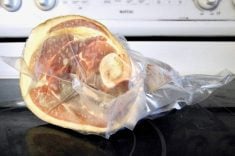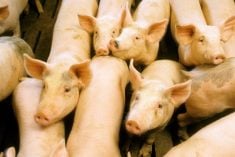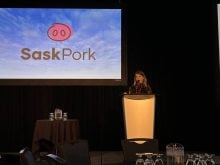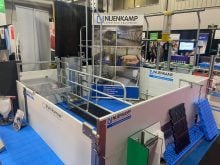Ayrquip’s pig sorter and software garnered interest from pork producers during the London Farm Show in early March.
The company’s stainless steel open-concept unit is six inches longer than its competition to accommodate heavier animals for accurate weight readings. The fully enclosed software is protected from the elements and adjustable to existing sorters. Ayrquip also offers ongoing service.
Why it matters: Swine barns are a difficult environment for electronics, which are key components in sorters.
Read Also
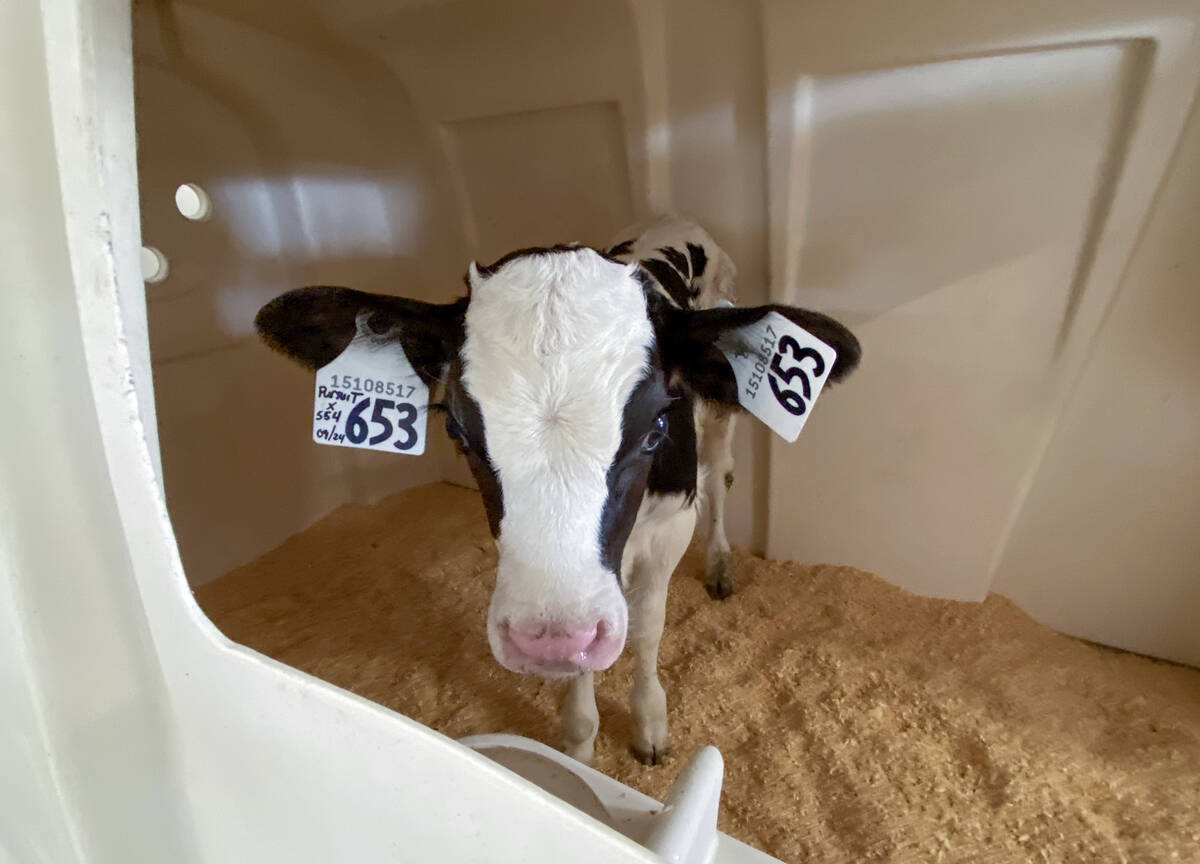
Lactanet turns methane expertise into business opportunity
Lactanet’s new fee-for-service breeding tool initiative to reduce greenhouse gas emissions in Canadian and Swiss Holstein herds will launch in April 2026.
“Anything inside of a pig barn should be either stainless steel, plastic or concrete,” said Bert Tichelaar, owner of Ayrquip Ltd.
“Electronics don’t really belong in a pig barn; therefore, we have to do the best we can to have them in weather-tight enclosures.”
The electronics are sealed in a heavy, weather-resistant plastic box, and a flip-top, weather-sealed casing protects the HMI touchscreen controls, which are accessible without affecting the components.
“(It’s) Wi-Fi capable, so if you wanted to get the app on your phone, you can run this out of Florida (for example) and change your settings,” Tichelaar told Farmtario. “A lot of the competition, once you open it to make adjustments to here (the HMI screen), you’re letting ammonia get to your electronics.”
The customizable interface tracks the weight and number of animals processed and can identify and adjust if two animals enter at once.
Tichelaar’s demo at the Ayrquip booth involved six weight groups set to direct hogs to a sales pen or back to the barn.
He usually sets clients up with four weight groups, including one with an ideal shipping range and another that is 14 pounds lighter, to calculate how many animals will be ready the following week.
“If you use all your groups, you can say, hey, I’m gonna be shipping 600 pigs this week, 400 next week, 450 the week after, and it’s usually fairly accurate,” said Tichelaar.
The auto-marking paint capabilities allow producers to mark animals most likely to reach sale weight for the following shipment or mark heavier animals as a market priority when shipping two groups simultaneously during busier seasons.
Alternatively, producers can use the system to group smaller pigs to maximize profit, labour savings and time management.
Peter Mettler runs a 300-sow farrow-to-finish pork operation near Wallenstein. He stopped by the Ayrquip booth to investigate Tichelaar’s software because his current system’s iPad arbitrarily freezes, shuts down and reboots, leaving all doors open in the middle of a sort.
“You know how it is, it’s great when it works, but it sucks when it doesn’t,” Mettler said with a laugh. “We’ve got the same scale – the main body – and he can make his technology work on it.”
Mettler’s brother-in-law, Bruce Koehler, said most farmers look for ways to reuse or repurpose tools, including sorters.
“This part (metal sorter frame) is good; you’d feel guilty as heck to throw it in the scrap pile,” said the semi-retired dairy farmer. “(Mettler) ships pigs every week, so if he’s down for six weeks, he’s guessing, and anything wrong will cost him money.”
Instead, Mettler could take the sorter to Tichelaar’s Princeton shop and have it back in days, equipped with the Ayrquip program and with assurance of product service.







